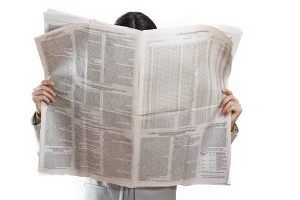
In an era characterized by the rapid dissemination of information through digital platforms, combating disinformation has become a pressing concern for governments worldwide. The European Union (EU), recognizing the detrimental effects of disinformation on democratic processes and societal cohesion, has taken decisive steps to protect media outlets against this pervasive threat. Through a new legislative framework, the EU aims to safeguard media integrity and bolster public trust in information sources. This article delves into the key provisions of the law and assesses its potential impact on combating disinformation within the European Union.
The proliferation of disinformation poses multifaceted challenges to modern societies. False narratives, spread through social media and online platforms, can manipulate public opinion, undermine trust in institutions, and even incite social unrest. Recognizing the need for a coordinated response, the EU has enacted the Media Integrity Protection Act (MIPA), a comprehensive legislative framework aimed at countering disinformation and preserving the integrity of media outlets.
At the heart of the MIPA lies a set of provisions designed to enhance transparency and accountability in media operations. One of the central requirements mandates media outlets to disclose their ownership structure, funding sources, and any affiliations that may influence their editorial content. By promoting transparency, the law empowers citizens to make informed judgments about the credibility and impartiality of media sources.
Moreover, the MIPA imposes stringent obligations on digital platforms and social media networks to combat the spread of disinformation. These platforms are required to implement measures to detect and remove false or misleading content promptly. Failure to comply with these requirements may result in significant fines, thereby incentivizing platforms to prioritize the integrity of the information disseminated on their networks.
Furthermore, the MIPA establishes a dedicated regulatory body tasked with overseeing compliance and enforcing the provisions of the law. This regulatory authority possesses the mandate to investigate complaints, monitor media practices, and impose sanctions on entities found to violate the stipulated regulations. By establishing clear enforcement mechanisms, the EU aims to ensure the effective implementation of the MIPA and deter malicious actors from engaging in disinformation campaigns.
Critics of the MIPA have raised concerns regarding its potential impact on freedom of expression and journalistic independence. They argue that stringent regulatory measures may inadvertently stifle legitimate dissent and hinder investigative journalism. However, proponents of the law contend that the primary objective is not to restrict freedom of speech but to combat deliberate efforts to deceive and manipulate public discourse. They emphasize the importance of striking a balance between freedom of expression and the need to safeguard the integrity of democratic processes.
In addition to regulatory measures, the MIPA places a strong emphasis on enhancing media literacy and promoting critical thinking skills among the populace. Educational initiatives aimed at raising awareness about the proliferation of disinformation and equipping individuals with the tools to discern credible sources from misleading content are integral components of the legislative framework. By fostering a more discerning public, the EU seeks to mitigate the influence of disinformation and cultivate a culture of responsible information consumption.
The implementation of the MIPA represents a significant step forward in the EU’s efforts to address the challenges posed by disinformation. However, its effectiveness ultimately depends on the collective commitment of governments, media organizations, and civil society stakeholders to uphold the principles of transparency, accountability, and integrity in the media landscape. Collaborative initiatives aimed at fostering cross-border cooperation and sharing best practices can further enhance the resilience of European societies against the onslaught of disinformation.
Looking ahead, ongoing monitoring and evaluation will be essential to assess the impact of the MIPA and identify areas for improvement. As disinformation tactics evolve and adapt to technological advancements, regulatory frameworks must remain agile and responsive to emerging threats. By continuously refining and updating legislative measures, the EU can stay ahead of the curve and effectively safeguard media integrity in an increasingly digital world.
In conclusion, the Media Integrity Protection Act represents a significant milestone in the EU’s efforts to combat disinformation and preserve the integrity of media outlets. Through a combination of regulatory measures, educational initiatives, and enforcement mechanisms, the law aims to enhance transparency, accountability, and public trust in information sources. While challenges remain, the MIPA provides a robust foundation for addressing the complex and multifaceted nature of the disinformation landscape within the European Union.





